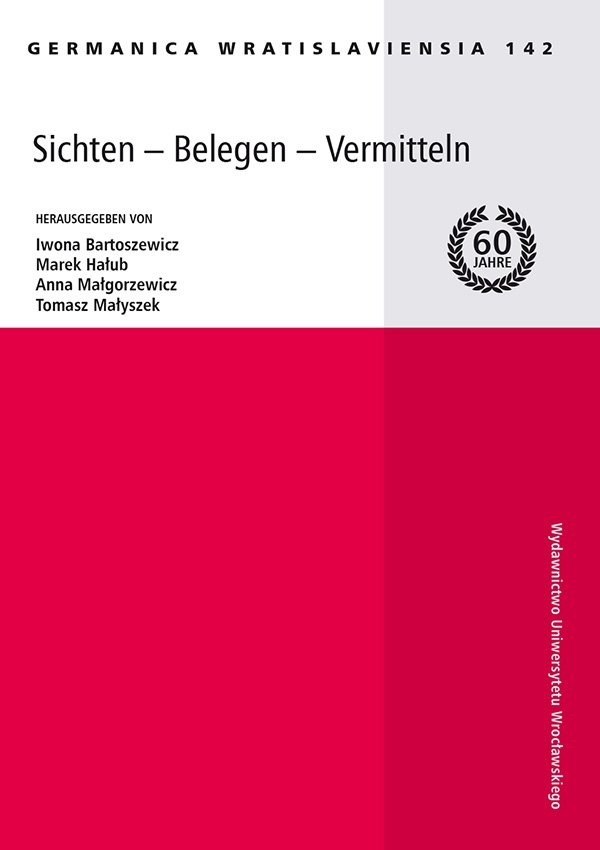

Sprachwissenschaft

In dem vorliegenden Beitrag wird auf grundlegende Faktoren verwiesen, denen man bei der Übertragung der deutschen Komposita ins Polnische Rechnung tragen sollte. Zu diesen Faktoren gehören: Binarität der Komposita, Reihenfolge der Kompositaglieder und Nichtvertauschbarkeit der Glieder ohne Bedeutungsverlust, unbegrenzte Ausbaumöglichkeiten der deutschen Komposita, Fugenelemente als Verbindungskitt zwischen zwei Konstituenten einer Zusammensetzung, Paraphrasierung als Mittel zur Ermittlung der semantischen Beziehungen in einem Kompositum und Ad-hoc-Bildungen als Besonderheit der deutschen Wortbildung. Angesichts der Tatsache, dass das Deutsche den Beinamen ,Substantivspracheʽ hat, wird hier die Aufmerksamkeit vorzugsweise den substantivischen kompositionellen Formationen geschenkt. Das untersuchte Korpus konzentriert sich auf die Bandwurmkomposita – darunter pressetypische, Aufmerksamkeit erregende Lexeme sog. Eyecatcher sowie Ad-hoc-Bildungen, die für den Übersetzer häufig als eine harte Nuss zu knacken sind. Bemerkenswert ist die Tatsache, dass die in einem deutschen Kompositum implizierten semantischen Relationen durch ein komplexes Vorgehen im Übertragungsprozess, durch die Vereinigung von interkulturellen, sprachlichen und translatorischen Kompetenzen effektiv in die Zielsprache übertragen werden können.
Where Is the Beginning and Where the End? Features of German Compounds and Their Characteristics in the Context of Translation
Translation issues deserve a lot of attention, particularly if they are related to linguistic phenomena characteristic of the given language. Translating multiple complex compounds from German into Polish constitutes just such a phenomenon and it is interesting precisely from the point of view of translation. This article is devoted to peculiar characteristics of German compounds which should be taken into account in the process of translating them into the Polish language. Several important factors have been discussed which must not be overlooked during a semantic analysis of multisegmental compounds if errors in translation are to be avoided. These are: the binarity of compounds, the sequence of individual segments in the compound and the semantic consequences of their fixed position, the potential for free expansion of German compounds, the occurrence of joint interfix, paraphrasing as a way of establishing the semantic relations between the segments of the given compound and occasional constructions as a peculiarity of German word formation. Because a characteristic feature of German word formation is the tendency to form nominal compounds, the corpus created for the purpose of the present article and subjected to analysis consists of nominal compounds. The analysis I have conducted makes it possible to draw the conclusion that German multisegmental compounds are translated into the Polish language mostly using complex syntactic structures, the so-called phrases, rather than structurally equivalent constructions. Phrases, which function as equivalents of German compounds, are in most cases exceptionally well developed, often additionally characterized by an adjectival or genitival modifier, or a subordinate clause, which, in comparison with the one-word German compounds does not seem economical as regards the quantity of words which are connected syntactically. Providing an adequate equivalent in the target language is a considerable and ambitious challenge. Apart from having linguistic skills and necessary knowledge, it requires from the translator analytical and synthetic skills as well as the ability to approach the given problem critically and creatively. Only a compilation of those skills and abilities guarantees a correct/professional translation as an end product devoid of ambiguities.